In many ways, Australia is just like America. But there are a few obvious differences I must discuss. Even though we speak the same language, there are some words and phrases that I definitely had to learn.
We all know terms like g’day, mate, no worries and the loo. But whereas we say “how are you,”“how’s it going” or “what’s up,” here in the land ‘down under’ they say how ya going instead. When we say “good going” or “good for you,” these guys here say good on ya! We’ve all heard the Ozzie term barbie for barbecue before. But they seem to “cutesitize” a lot of other words as well: breakfast=brekkie, mosquitoes=mozzies, university=uni, avo=afternoon, and therefore, of course, evo=evening. Of course, because of their ties to England a lot of the vocabulary here is the Queens English: biscuits for cookies and chips for fries.
Also, speaking of food, rockmelon is cantaloupe—I much prefer the word rockmelon anyway. I mean, what is a cantaloupe? It sounds like some antelope in a can or something. Actually the cantaloupe we eat in the US is really a muskmelon. The Cantaloupensis, (look closer the word you think you just saw is not in there!) the true cantaloupe, has a completely different appearance and is only grown in Europe. Oh, and the capsicum (red and green bell peppers) that I mentioned in my last post? I’ve done some research and discovered that is their actual scientific botanical name. Wow—that’s very deep of the Australians and just so far removed from their other words like brekkie.
I was shopping in a department store recently and came across the Manchester section. The what? Apparently, it’s the household linens and sheets section. I’ve been away so long I can’t even recall what we call it. A bottle shop is a liquor store and a milk bar is a convenience store and speaking of, there is a 7-11 on nearly every corner. And I stopped by Target a few days ago to replenish some of my toiletries. But this major coffee drinking town only has a handful of Starbucks, instead there are hundreds of independent coffee shops and cafes where the locals gather and laze the day away with latte in hand and cigarette in mouth.
Flip flops here? Still called thongs. I’m sure that leaves you with an important follow-up question—and yes, here, it’s still called the G-string. Just like the good ol’ 70s. And lastly, this is definitely a nation that likes its booze or piss (what they call alcohol). You can surmise this by all the slang terms they have for vomiting: pavement pizza, kerbside quiche, rainbow sneeze, technicolor yawn, liquid laugh, drive the porcelain bus, and simply chunder. Mmm… nice images.
I can’t imagine driving here as I’m slowly getting used to just walking on the ‘wrong’ (left) side of the sidewalk and standing on the left side of the escalator or passing others on the right instead of left. But occasionally my right-leaning (not politically speaking) tendencies get the better of me and I drift over to that side. It must be a sheer giveaway to the locals that I am American. I can just hear them, “look at her walking on the right, tsk-tsk silly American girl!”

Besides driving on the left, there are some other driving rules you better know before getting behind the wheel here. At some intersections here they have what are called hook turns, a unique driving rule to Melbourne. Now, again, keep in mind they drive on the left here. A ‘hook turn’ is literally a right turn made from the left most lane. At these intersections, you turn right from the left hand lane, leaving the right hand lane free for through traffic and the tram tracks in the middle clear for trams. So instead of getting over to the right most lane, you actually pull as far to the left as possible (basically perpendicular to the cars waiting at the red light), wait in the intersection for the light to change and then pull a wide right turn across the whole intersection. Think about it back in the US as if when you wanted to make a left hand turn you first pulled all the way to the right curb to do it!
Something else I’ve noticed, especially from working here, is they seem to charge for everything—at my café you have to plunk down an extra fifty cents if you want mayo or mustard on your sandwich, and even just toasting it will cost you another two quarters (if they used quarters here)! You want that ‘to go?’ You have to ask for take away containers, and guess what? That will be one dollar more, please.
Now some of these differences I see as improvements. Here there are simply no pennies. These archaic coins are pretty worthless so they just simply round up. For the most part all prices are multiples of five. Makes life much easier.
 Like 95% of the rest of the world, Australia is also on the metric system. Why we never switched over completely in the U.S. is perplexing to me. I remember learning it all in the 3rd grade and then it just seemed to ‘go away.’ The United States is now the only industrialized country in the world that does not use the metric system as its predominant system of measurement. But we’re inching toward it, so to speak.
Like 95% of the rest of the world, Australia is also on the metric system. Why we never switched over completely in the U.S. is perplexing to me. I remember learning it all in the 3rd grade and then it just seemed to ‘go away.’ The United States is now the only industrialized country in the world that does not use the metric system as its predominant system of measurement. But we’re inching toward it, so to speak.
Metric is the preferred measuring system for U.S. trade because our overseas trade partners all use it. Doctors do all their measurements in metrics including distributing medicine in cubic centimeters. Virtually all scientists in the U.S. use metric measures exclusively. Track and field events have dropped yards and miles all together. I remember running the 100-yard-dash in middle school. Now they don’t measure running in yards or miles, but in meters, so for example, the 1600 meter event has replaced the mile. Congress passed a law in 1975 to work toward making the metric system the standard system in America. This was amended in 1988 when it was decided that the government itself must be metric before it can start asking the private sector to follow suit. That’s right, people. There’s a creeping “metricization” going on. And someday, you may finally have to admit that kilo for kilo, it really is a better system.
Working in the food service industry, I’m well aware that there is virtually no tipping here. As a traveler, it certainly makes things much easier and as a worker it’s okay, because the minimum wage here is much higher than the sad low wages we have back in the U.S. In fact, New Zealand and Australia were the first countries in the world to put the ‘minimum wage’ into effect back in the late 1800s to ensure fair pay and no exploitation of workers. The current federal minimum wage for full or part time employees aged over 21 in Australia is AU$13.47 (~US$10.50) per hour. As of January 2007, the United States federal minimum wage is $5.15/hour. I think I made more than that in high school nearly 20 years ago.
(Coincidentally, the day after I posted this the U.S. Senate voted overwhelmingly to raise the federal minimum wage to $7.25/hour. But as all things bureaucratic, it would not happen quickly.The legislation would raise the minimum wage in three steps. It would go to $5.85 an hour upon taking effect 60 days after the president signs it into law, then to $6.55 an hour a year later, and to $7.25 an hour a year after that. This is the first raise to the minimum wage in a decade.)
Supermarkets here have virtually done away with plastic bags. It seems nearly everyone uses one of those reusable canvas grocery sacks. They sell them only for 99¢ right at the register and it just seems silly not to. In fact, they have somehow made it seem cool to be seen with a green canvas supermarket bag. I say this because it seems everyone has one. That is probably the simplest, best marketing strategy. Why has this not become the norm in the U.S.?
 Finally, it appears that Australia has the friendliest flies I have ever met. Never have I become so aware of my tiny winged friends buzzing around me. Back in the States, it is very rare that I’m bothered by flies. Normally if one is around you, you can bat it away and that’s that. Not so here.
Finally, it appears that Australia has the friendliest flies I have ever met. Never have I become so aware of my tiny winged friends buzzing around me. Back in the States, it is very rare that I’m bothered by flies. Normally if one is around you, you can bat it away and that’s that. Not so here.
The “blowies” are just like our standard house fly, but these little buggers are lazy, slow moving, and stick to you like American flies on shit. Seriously, here you bat a fly away and it flies in a circle to land right back on your arm or face. The cute Kangaroo is usually held up as the animal that represents the essence of Australia. However in terms of influencing Australian culture, the Kangaroo is no match for the fly. Although the fly doesn’t appear on any flags, it has shaped everything from the Australian dialect to Australian fashion. In terms of speech, it has been said that the Australian accent is a product of Australians breathing through their noses for fear that flies might blow into their mouths. Flies have also inspired a new style of body language. Known as the “Australian Salute,” Australians have turned flicking away a fly into an art form.


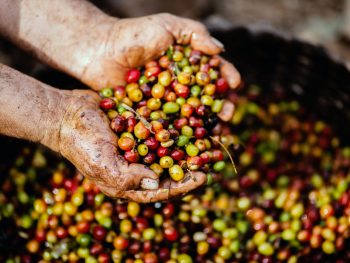

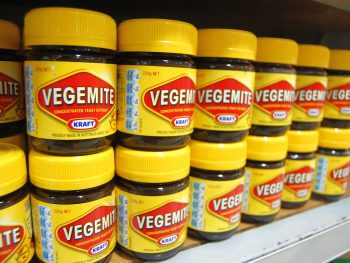
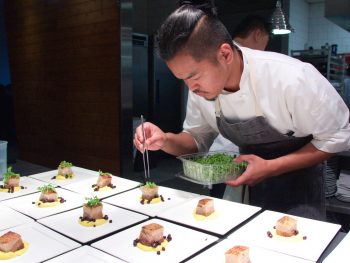

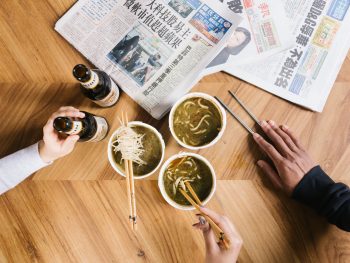
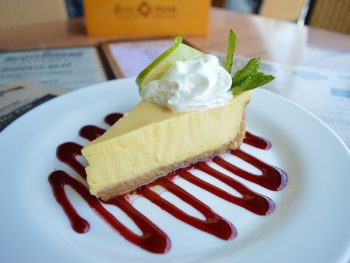





 Will Work for Food
Will Work for Food
Funny that you commented on the Hook Turns in Melbourne. The first day my wife and I were in Melbourne we were terrified of those turns and would keep driving until we came to a one way street. But, on the second day we got a hang of them. They are actually kind of fun.
Another “cutesized” word we heard all the time was Sunnies for sun glasses.
One word we found different than the states was Marinara which here often means a veggie or meatless sauce. We found in Australia it means anything and everything from the sea. We were surprised when our pasta marinara came with tentacles and other frightening parts of creatures best left below the sea.
Good on ya for the great post.
One word, commonly known amongst all Aussies that has no peer in our lexicon is "Wanker". Have you met any wankers? Does any serious person really say To-mah-toe? Only a wanker would pronounce it this way.
I'm still trying to get my mind around the whole concept of hook turns….